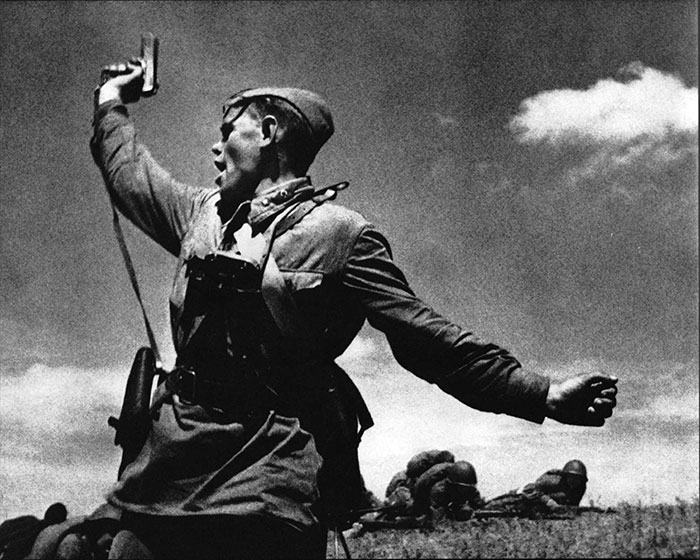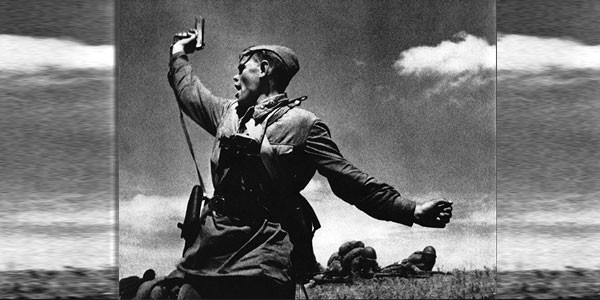“Politruk” Alexey Yeremenko leads his men into combat, armed with a Tokarev TT-33. He was killed minutes after the photo was taken. Khorosheye, near Voroshilovgrad, Ukraine, July 12, 1942.

The photo is one of the iconic photographs of the Soviet in World War II, comparable only to the photo of the Red Flag over Reichstag.
“Politruk” (political commissar) Alexey Yeremenko (220th Rifle Regiment/4th Rifle Division) encouraged his men to counterattack against German positions. The photo shows the moment before he was killed in the village of Khorosheye, near Woroschilowgrad (Luhansk today), Ukraine.
The Soviet war reporter and photographer Max Alpert took the photo. He did not know the identity of the leader at that time he took it. He called the photograph as “Kom-bat”, a Soviet military acronym for “commander of battalion”.
The soldier was only identified 23 years later when the wife and children of Yeremenko saw the photo on the front page of the “Pravda”. The special edition was a commemorative 20-year jubilee issue dedicated to the victory over Nazi Germany — “Victory Day” is an official holiday in former USSR and now Russia.
Taken on July 12, 1942 in Luhansk, which was the area of military operations involving the 220th Infantry Regiment of the 4th Infantry Division. These were the days when the Red Army was in bloody defensive position against the much superior forces from the Axis opponent.
The counterattack led by political commissar Alexey Yeremenko was on the field near the village of Good between the rivers Lugan and Lozova.
Photographer Max Alpert took a position in a foxhole ahead of the defensive line. The Germans began the attack after the airstrike and artillery bombardment. When Alpert saw the officer leading the charge, he rose up at once to take the now iconic World War II picture. Alpert spent some time witnessing the bloody battle. He later heard the other soldiers shouting: “Kombat is killed!”.

